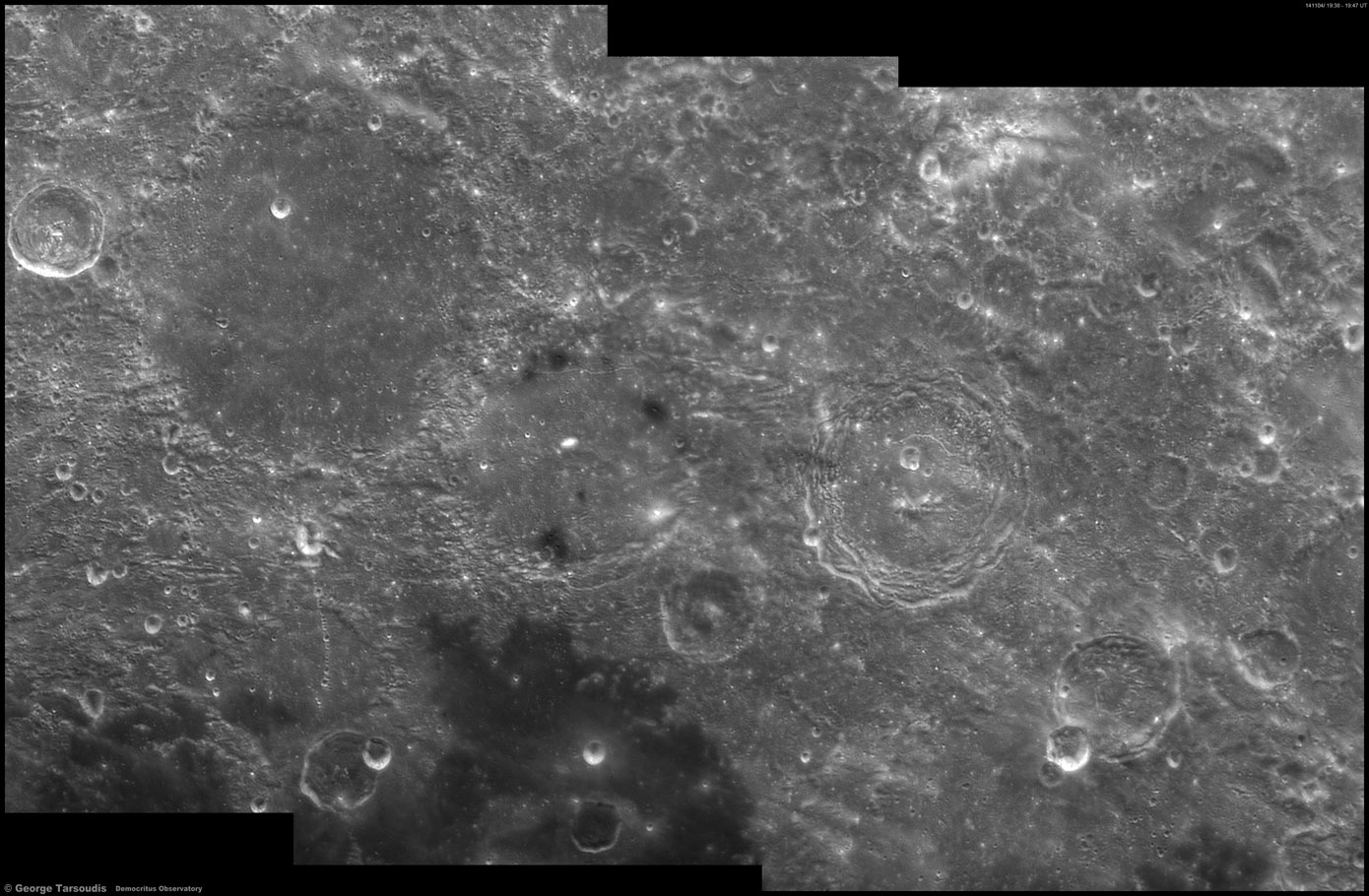November 6, 2014
Black & White, Sorta

image by George Tarsoudis, Greece
Too often observers avoid the full Moon, and because of its sky-wide brightness, most of the rest of the universe. But George's great image illustrates why you should pump up the magnification (to dilute the brightness by spreading it over a larger area) or use a Moon filter to see what new lunar perspectives you can gather. Without shadows the topography that casts them is hard to pick out, but differences in reflectivity become clear. The biggest is between the iron-rich, dark mare lavas and the plagioclase-rich, bright highlands. But there are some other brightness features, too. Best known are the 7 or 8 volcanic dark halo craters on the floor of Alphonsus. Their darkness is due to volcanic ash; dark halo craters that are not inside craters are dark because of pulverized dark maria that was exacted from below a surface dusted with bright ejecta. On George's image I noticed (for the first time?) a possible dark halo type deposit on the north rim of Arzachel. It is vee-shaped as if it were blown northward (to the left) from a source at the edge of the crater floor. There is no clear source, even on LRO images. Finally, there is one other unusual bright feature. Do you see it?
Chuck Wood
Technical Details
SkyWatcher 14 inch @f/4.5, camera UNIBRAIN 785, filter red, barlow 3X, mosaic 3 images.
Related Links
21st Century Atlas chart 12.
George's website and Facebook page.
Yesterday's LPOD: Hippalus Arcs
Tomorrow's LPOD: Piercing the Rings
COMMENTS?
Register, Log in, and join in the comments.



